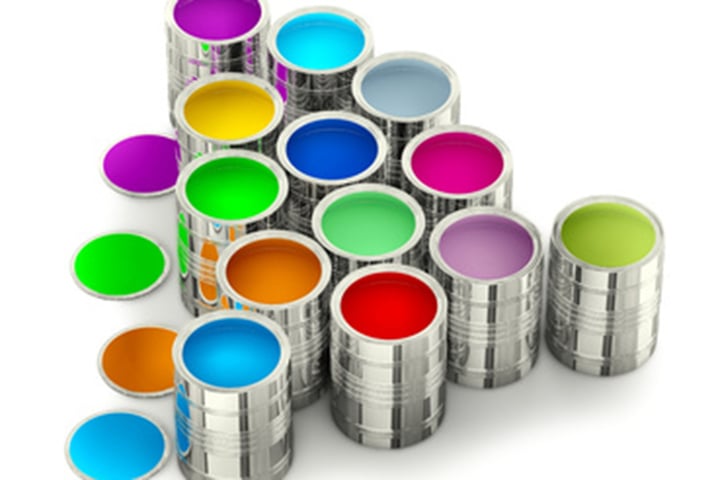
Paints and varnishes are applied to surfaces to provide a decorative or protective coating. As a basic requirement, they should form a uniform, defect-free coating on a surface. Surface and interfacial tensions play a key role in coating quality.
Paints are composed of four components; binders, solvent, pigment, and additives. Additives are ingredients added in small quantities to modify the properties of paints. For example, wetting agents, are used to lower the surface tension of the liquid, thus allowing the better wetting of the substrate.
On a molecular level, the cohesive forces between liquid molecules are responsible for the phenomenon known as surface tension (ST). In the bulk, molecules are interacting equally with each other in all directions. However, at the surface molecules do not have the same neighbors on all sides. Thus, a net inward force pulls the molecules toward the bulk. This forms a surface “film” which makes it more difficult to move an object through the interface versus moving an object while it is completely immersed.
Coating efficiency of the water-based formulation is typically improved by the addition of wetting agents. The main purpose of the wetting agent is to lower the surface tension of the formulation to allow it to wet the substrate better.
Surface tension measurements can be used to compare different coating formulation with each other. Typically, lower surface tension values, indicate the better wetting ability of the formulation.
Surface tension measurements are also used to evaluate the amount of wetting agent needed. Surface tension vs. wetting agent concentration curve reaches a saturation point after which the addition of wetting agent no longer lowers the surface tension. This point is also called a CMC point and is an important parameter to measure as using an excess amount of wetting agents is not economical nor environmentally friendly.
If you would like to read more about surface tension and how it can be measured, please download the white paper below.
A wetting agent is a surface-active molecule used to reduce the surface tension of water.
The term surfactant comes from the word surface active agent. At the interface, they align themselves so that the hydrophobic part is in the air and the hydrophilic part is in water. This will cause a decrease in surface or interfacial tensions.
Surface tension plays an important role in Li-ion battery slurry optimization.
Surface tension plays an important role in the electroplating solution.
When measuring contact angles or making surface tension measurements with a pendant drop, selecting the correct tip or needle for your liquid is crucial.
The surface tension of water is about 72 mN/m at room temperature which is one of the highest surface tension for liquid.
Surface tension is a quantitative measure that can be correlated with a solution’s ability to remove dirt.
Surface tension and wettability are important physical properties that play a significant role in the effectiveness of agrochemicals.
Explains three different methods to measure surface tension.
